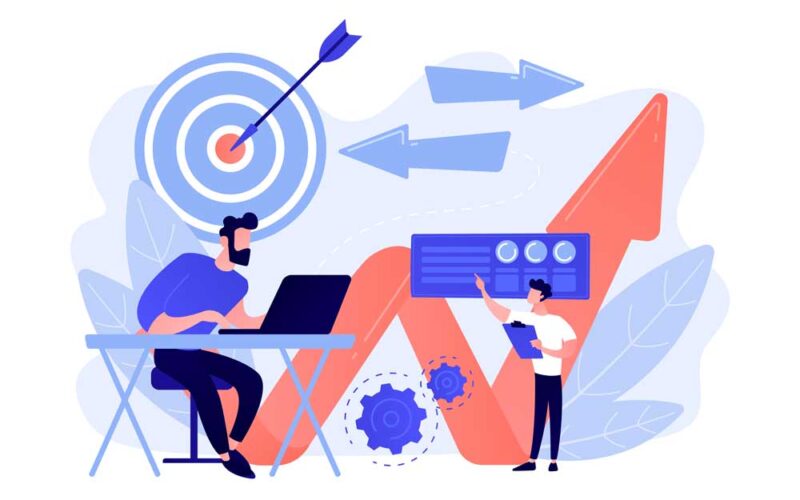Business improvement that is indispensable for corporate activities
Business improvement is an indispensable initiative in corporate activities. In recent years, business improvement has become even more critical due to labor shortages and workstyle reforms due to the declining population. Business improvement means “optimizing business processes to achieve the goals of the management plan” or “improving efficiency by improving specific business/work.” More companies have recognized the importance of business improvement in recent years by promoting digitalization and workstyle reforms. Awareness of business improvement has permeated the employees, and know-how for implementing business improvement also accumulated in companies. Among them, Toyota’s “Kaizen” is the most representative theory regarding business improvement in Japanese companies.
The Conception of Kaizen
Kaizen is an activity that is mainly carried out at the manufacturing site to review and improve the work. So, why is it called “Kaizen” instead of “improvement”? “Improvement” in Chinese means “to improve the bad parts.” On the other hand, Toyota gives Katakana “Kaizen” the meaning of “not satisfying the current situation and making it better than it currently is.” In other words, Katakana’s “Kaizen” point recognizes the issues, thinks about countermeasures, and makes improvements. Kaizen is used in Japan and worldwide as “KAIZEN.” The English word “improvement,” which pertains to the action of “improving or being improved,” cannot fully express the meaning of Japanese-style Kaizen, so the Japanese term is used as it is (Collom, 2021).
Activities to work with Kaizen
3M Reduction
3M refers to Muri, Muda, and Mura.
Muri is to do more than people can do and to increase the burden.
Muda is work that does not add value, and the most famous one is “Seven Wastes,” advocated by Toyota.
Mura is a condition in which the quality of work is not constant. For example, the amount of work, the quality of materials and finished products, and work procedures are inconsistent.
Recently, work styles have changed drastically, such as with the introduction of telework and the spread of the flextime system. As the way of working changes, the burden on the teams cannot be easily seen, and the responsibility concentrates on a specific person or process, which may make the word “Muri.” In addition, it says that more than half of the daily work is routine. For everyday work, it is easy to lose awareness of issues and neglect to improve. Furthermore, the quality will be uneven if the method differs for each person. Such “Muri, Muda, and Mura” cause a decrease in work efficiency. Eliminating 3M can reduce workload, speed up, reduce costs, and stabilize and improve quality.
Promotion of 5S activities
Like Kaizen, 5S is a concept born from the Japanese manufacturing industry. 5S stands for five acronyms: “Organizing Sorting,” “Organizing Setting-in-Order,” “Cleaning Shining,” “Cleaning Standardizing,” and “Discipline Sustaining the Discipline.”
- Sorting: Separate necessary and unnecessary items and dispose of unnecessary items
- Setting-in-order: Make it easy for anyone to get what they need
- Shining: Activities to maintain a shiny condition without dust, dirt, dust, and dirt
- Standardizing: A state in which the 3S activities of the organization, tidying, and cleaning can be formalized and maintained.
- Sustaining the Discipline: A state in which the 3S activities of organizing, tidying up, and cleaning have become a habit, and everyone is firmly following the rules.
Many positive effects can be obtained by thoroughly implementing 5S activities in the workplace and establishing them within the company. For example, comprehensive inventory management eliminates inventory waste and reduces costs. In addition, standardization of work has the effect of making work smoother and more accurate. Then, the quality of products and services will be improved, and customer satisfaction can be increased.
5S activities apply to all workplaces, regardless of the manufacturing industry. If the entire company works on 5S, it will play a significant role in creating a “safe,” “efficient,” and “comfortable” workplace.
On-site subject by bottom-up type
Business improvement can broadly be divided into “top-down” and “bottom-up.”
The top-down method is where managers and leaders proactively work on business improvement and apply the specified measures to general employees. On the other hand, the bottom-up type refers to business improvement mainly carried out on-site. It is a method in which management and leaders examine the content of KAIZEN proposed from the field and implement it if they feel its effectiveness and validity.
A feature of Toyota-style KAIZEN activities is bottom-up problem-solving. Instead of moving according to the management team’s instructions, all the field employees share their wisdom and carry out KAIZEN activities to improve work efficiency.
In other words, the most critical point is to change from a simple “waiting for instructions” state to a “starting to move” state. It says that such a “field-based” method leads to the motivation of employees and the improvement of awareness of the parties concerned.
#References
Collom, L. (2021). What is Kaizen, and why is it important? Toyota Forklifts, <https://www.toyotaforklift.com/blog/what-is-kaizen-and-why-is-it-important>. [Accessed 17 July 2022].
Ikeda, N. ( 2020). TOYOTA NEWS #100|Toyota becomes stronger – the hidden power of kaizen [2Q FY2021 Earnings]|Toyota Times, TOYOTA TIMES, <https://toyotatimes.jp/en/report/financial_results_2021/100.html>. [Accessed 17 July 2022].
Yuzawa, M. (2021). Toyota shifts gears in ‘kaizen’ drive to blunt global chip shortage, Nikkei Asia, <https://asia.nikkei.com/Business/Automobiles/Toyota-shifts-gears-in-kaizen-drive-to-blunt-global-chip-shortage>. [Accessed 17 July 2022].
